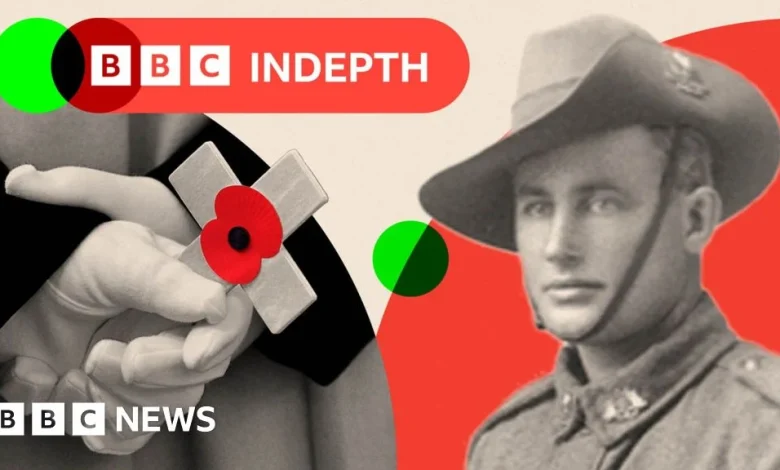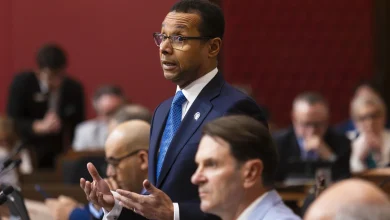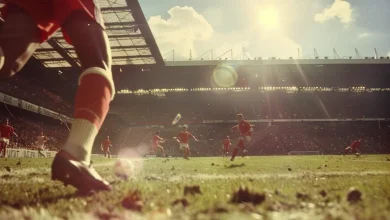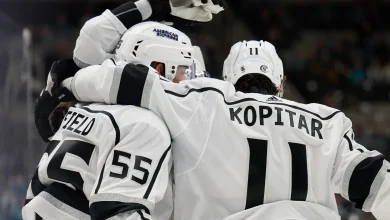The challenge of commemorating WW1 without any living veterans

Allan LittleSenior correspondent
BBC
George Bell and Thomas McGill were cousins. Their families came from the small village of Glenluce in south-west Scotland where I grew up. Every day, on my way to school, I’d walk past their names, which were inscribed on the village war memorial.
George was a labourer and enlisted early, in September 1914. He was killed at Gallipoli eight months later. Thomas enlisted in 1916 and died the following year in France. Both had emigrated to Australia, part of a wave of rural depopulation as farm workers were replaced by mechanisation.
Theirs are among 51 names on that pale grey granite cenotaph.
It was built by a master mason called Robert MacMillan Clive, who was my great-grandfather. As a child in the 1970s, we used to gather by it on Armistice Day to “remember”. Once or twice, I carried the union flag.
But it meant little to us. World War One seemed like ancient history in my childhood imagination, even though I was born only 40 years after the signing of the Treaty of Versailles.
Roll of Honour
Thomas McGill and George Bell were cousins
The idea of Remembrance, the forms it took, emerged in the immediate aftermath of the Great War, as it was then known.
Of the eight million British men who fought in it, almost one million were killed: one in eight. In Scotland one in four never came home.
But today, some 107 years after the guns fell silent, there are no WW1 veterans left alive in the UK. The last veteran of the trenches was Harry Patch, who died in 2009 at the age of 111.
Though we go on remembering vicariously, performing rituals of solemnity and sorrow to honour those who died, the meaning of those rituals have changed.
So, what does public commemoration mean when the veterans themselves have all died – and when there are few others alive today who remember first-hand the mass shared grief that gave rise to them?
An urgent need to find meaning
Of the 51 men listed on the memorial in Glenluce, at least 20 have no known graves. Their bodies were either never recovered, or they were never identified.
The men of my village left their bones in France and Flanders, Palestine and Gallipoli and Greece and Macedonia.
The village – like every town and village in the country – emerged from the war as a community of bereavement. Pretty much every street had lost someone. Survivors carved their grief into the landscape of Britain, by raising memorials in stone to those they’d lost.
The end of the war in 1918 brought an urgent shared imperative: to make sense of what had happened, to find meaning, a way to believe that it had not been for nothing.
Topical Press Agency/Hulton Archive/Getty Images
In 1918 crowds celebrated the signing of the Armistice
“There was this public need for recognition,” says Liam Markey, research associate at Liverpool University, who has written a study of how Remembrance has changed over the decades.
The early national commemorations were “also a way to legitimise the war”, he says, “to be able to say that these were the men who ended war; that this was the war to end all wars.”
Professor Jay Winter, of Yale University, author of Sites of Memory, Sites of Mourning, points out that this all nodded to a very deep commitment.
“You know, ‘it mustn’t happen again. We cannot inflict this on our children’. There was astonishment, a shock realisation that the war had been so much more horrible than anyone had imagined it could be.”
AFP via Getty Images
The First World War ended at on 11 November, 1918, and this became known as Armistice Day (First World War veterans are pictured in the front row in 2008)
Almost immediately, the ritualising of sorrow acquired a public and national dimension.
A wooden cenotaph, initially intended to be temporary, was erected in Whitehall. The remains of an unidentified soldier were buried at Westminster Abbey on Armistice Day 1920.
The inscription on his grave reads “thus are commemorated the many multitudes… who gave the most that man can give, life itself… They buried him among kings because he had done good toward God and toward his house.”
WPA Pool/Getty Images
The remains of an unidentified soldier buried at Westminster Abbey
“This is one of the most unusual moments in British history,” says Prof Winter. “When the Tomb of the Unknown Warrior was consecrated, it’s estimated that two million people gathered to see it.
“It was a moment of joining together in recognition of the injustice of young men dying so that the old could go on living.
“There’s something terrible in that message and it needs to be performed in order to be tolerated.”
Forgetting the appalling realities
There was a paradox central to the early years of commemoration: that performing something that came to be known as “Remembrance” became one way of trying to forget.
“I think the first thing [they] had to forget is the harsh and appalling realities of the dismemberment of human bodies that went on,” says Prof Winter.
“What had to be forgotten was not only the suffering but the indignity of not dying physically intact.
“The [at first] Imperial and later Commonwealth War Graves Commissions are brilliant in that they’re beautiful. The beauty forgets the ugliness of the war.”
AFP via Getty Images
King Charles III attends the Remembrance Sunday ceremony in London
The idea that the Great War had been the war to end all wars had fallen apart in the late 1930s, with the outbreak of World War Two.
“The white poppy first appeared as early as the 1930s,” explains Liam Markey.
Some veterans themselves dissented from the formal rituals of Remembrance. “One veteran its quoted in one of the newspapers saying ‘every day is Remembrance Day for us’.”
At the end of the WW2, the public showed no great enthusiasm to build sites of Remembrance for those who’d died. There were no new monuments to the dead of 1939-45. Instead their names were tacked onto existing post-1918 memorials.
Participation in Remembrance services began to dwindle.
Fox Photos/Getty Images
Remembrance Day poppies being offered in the 1950s
By the 1960s, many people began to believe that as the memory of the trenches receded into distant memory, the annual commemoration had begun to serve as a way of sanitising the war; that they had begun to ritualise not shared bereavement, but national pride.
And, in the age of anti-Vietnam War protests, there was a backlash.
Benjamin Britten’s War Requiem was completed in early 1962. He incorporated the poetry of Wilfred Owen, which graphically depicted what Owen called the “pity” of war.
The war poets had not been much read in the 1920s and 1930s. They had not appealed to a public seeking to turn the page on the horrors of what they’d lived through.
But by the 1960s they, and especially Owen, had found large new readerships.
Hulton Archive/Getty Images
In the trench: A moment captured during World War One
Alan Clark, before he became Conservative minister, published The Donkeys – based on the phrase “lions led by…” – which challenged the settled narrative that the leader of British forces in France, Earl Haig, had been a strategic genius and the architect of victory.
At Haig’s funeral in 1928, a million had lined the streets but by the 1960s he was popularly perceived as the “Butcher of the Somme”.
The war experience was now being mercilessly satirised. The stage musical Oh! What a Lovely War opened in 1963 and was turned into a film directed by Richard Attenborough in 1969.
Keystone/Hulton Archive/Getty Image
The stage musical Oh! What a Lovely War opened in 1963
Much of the public wanted a different take on war – and one that challenged solemn pieties at the heart of Official Remembrance.
After the last survivor has died
It has been 14 years since the last surviving British veteran of WW1 died. As for WW2, of the five million British men and women who served in it, the Royal British Legion believes fewer than 8,000 are still alive. The youngest of these is 98 and many are over 100.
So, what will Remembrance mean when they are all gone?
Fox Photos/Getty Images
At Haig’s funeral in 1928 a million people had lined the streets
Poppy Scotland, a charity linked to the Royal British Legion, plants a Garden of Remembrance at this time of year in the heart of Edinburgh.
It is a carpet of little wooden crosses, perhaps nine inches tall, decked with poppies. Last weekend I watched a woman plant one and stand quietly for a few moments.
“It’s nothing to do with the military for me,” she admitted. “I come here to remember my sister, who died of cancer two years ago. She was my only sibling.
“She wasn’t religious so I haven’t used a cross, just a vertical piece of wood. But it’s a good place to come and remember.”
AFP via Getty Images
The idea that the Great War had been the war to end all wars had fallen apart by the late 1930s
People also queued at a pop-up stall offering Remembrance merchandise: T-shirts bearing the words Lest We Forget, poppy-themed Christmas cards, napkins, water bottles, mugs, large plastic poppies for your car.
Jane, a 56-year-old NHS worker, was taking donations. “I do this every year,” she said. “At work I’ve seen a lot of people who’ve served [in other wars too] and been affected, often in their mental health. They need support. It means a lot to me.”
Debbie Clapham, from Stow-on-the-Wold in Gloucestershire, bought an enamel poppy and was pinning it on her husband Sean’s rugby shirt when we spoke.
“We go to the parade every year in Stowe. People still come to watch but the parade itself is getting smaller and smaller.
“They stop the traffic, and you can see some of the drivers getting irritated – and that annoys me.”
“I was in Perth, Australia one Armistice Day,” Sean added. “The whole city came to a standstill at 11:00. There were bagpipers at all the street corners. It was very moving.”
EFE/REX/Shutterstock
Of five million British men and women who served in the Second World War, the Royal British Legion believes fewer than 8,000 are still alive
Inevitably, as the generation that fought WW2 disappears, the focus is shifting.
There are 176,000 service veterans in Scotland out of two million in the UK as a whole, many of whom fought in Afghanistan and Iraq.
Poppy Scotland, like the Royal British Region in the rest of the UK, offers them financial support, help with housing, and with adjusting to civilian life.
Yet most of the people I saw buying the merchandise last weekend seemed to be middle aged or older. Where are the young? I asked Jessica Gillespie, the Poppy Appeal manager there.
“We’re seeing more and more young people volunteering,” she insists.
“There are rugby internationals in town later. Wait till the rugby fans arrive. We’ll be busy with the young then. They’re among our biggest supporters.”
The challenge of remembering today
The public rituals we perform as a country haven’t changed much in a hundred years. But the spirit of them, the sense of purpose that accompanies them, shifts all the time.
For the men and women who took part in them more then a century ago, they were about alleviating devastating personal and collective loss and a grief that embraced the whole population.
In the absence of that grief, and soon, when there is no-one left who served in WW2, how will these acts of Remembrance retain their power to move us?
The challenge will be to remember that the core purpose of the phenomenon we call Remembrance not to celebrate victory, or to celebrate the flag, or to take pride in what was done on the battlefields, but to acknowledge a great and overwhelming collective sorrow – and what Wilfred Owen called the “pity of war”.
AFP via Getty Images
The “Blood Swept Lands and Seas of Red” installation of ceramic poppies marked the centenary of the outbreak of the First World War
Back in Glenluce there is a name on the memorial that holds my attention more than others: William Clive.
I’ve often wondered whether, like Robert MacMillan Clive, we were related. No photo of William survives, but we know quite a bit about him. He was five foot seven-and-a-half inches tall, with dark hair and grey eyes, and like others he too had emigrated, enlisting in Toronto in March 1916. He had, for a spell, worked as a nurse.
He died age 34 at the Battle of the Somme, six months after joining the Army.
Had William Clive survived into old age I might have met him when I was a child. And, as long ago as it feels in some ways, this, on the other hand, makes WW1 seem startlingly recent.
Top picture credits: European Pressphoto Agency, Roll of Honour
BBC InDepth is the home on the website and app for the best analysis, with fresh perspectives that challenge assumptions and deep reporting on the biggest issues of the day. You can now sign up for notifications that will alert you whenever an InDepth story is published – click here to find out how.





